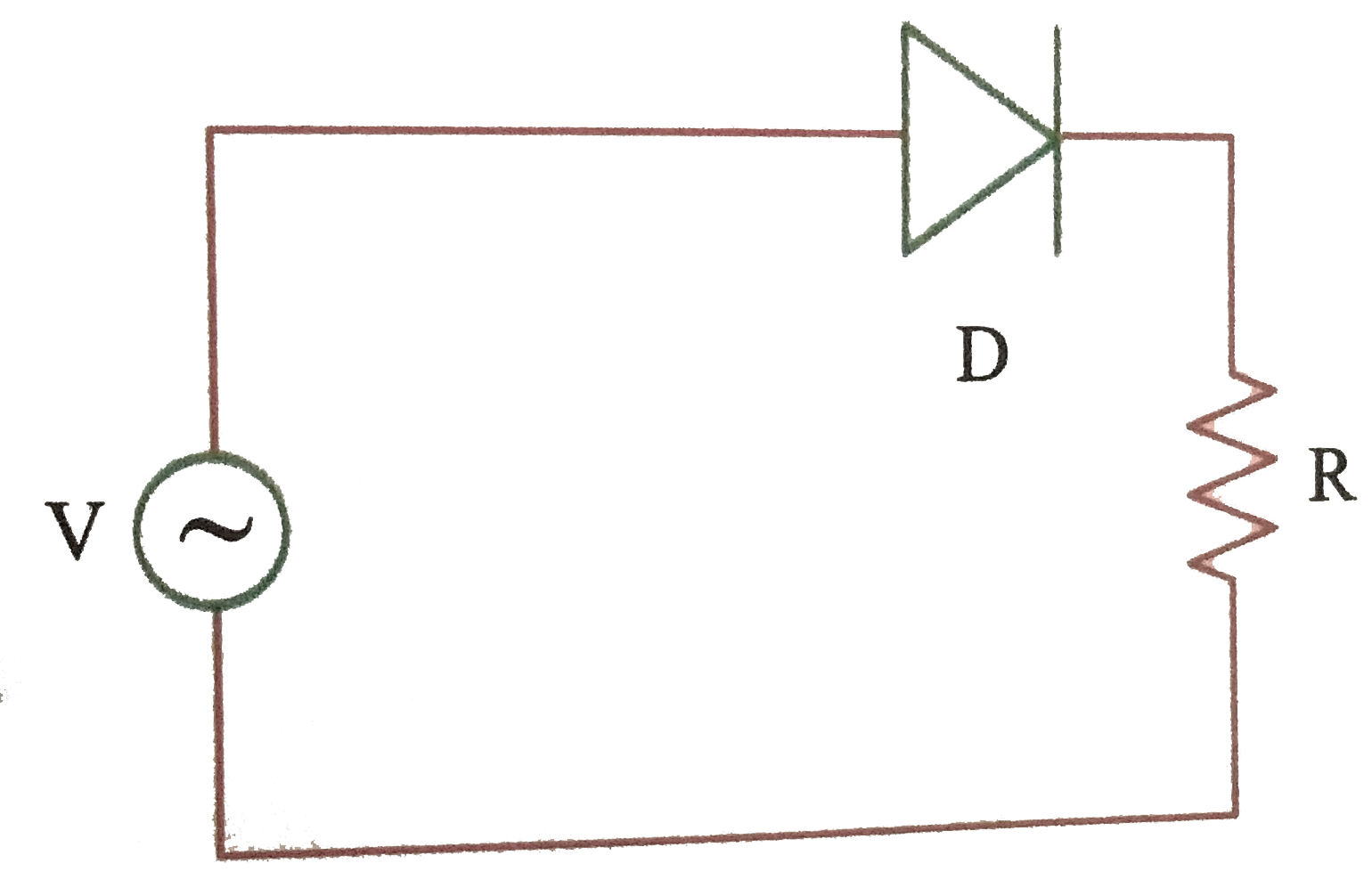Assertion : When two semi conductor of p and n type are brought in contact, they form p-n junction which act like a rectifier.
Reason : A rectifier is used to convent alternating current into direct current.
Assertion is correct, reason is correct, reason is a correct explanation for assertion.
Assertion is correct, reason is correct, reason is not a correct explanation for assertion
Assertion is correct, reason is incorrect
Assertion is incorrect, reason is correct
The correct Answer is:B
To solve the question, we need to analyze both the assertion and the reason provided.
Step 1: Understand the Assertion
The assertion states that when two semiconductors of p-type and n-type are brought into contact, they form a p-n junction which acts like a rectifier.
- Explanation: A p-n junction is formed when p-type semiconductor (which has an abundance of holes) is joined with n-type semiconductor (which has an abundance of electrons). This junction allows current to flow more easily in one direction than the other, which is the fundamental behavior of a rectifier.
Step 2: Understand the Reason
The reason states that a rectifier is used to convert alternating current (AC) into direct current (DC).
- Explanation: Rectifiers are indeed used in circuits to convert AC, which periodically reverses direction, into DC, which flows in a single direction. This is achieved by allowing current to pass through the p-n junction in one direction while blocking it in the opposite direction.
Step 3: Analyze the Relationship Between Assertion and Reason
Now, we need to determine if the reason correctly explains the assertion.
- While both the assertion and reason are true, the reason does not specifically explain why the p-n junction acts as a rectifier. The assertion describes the behavior of the p-n junction, while the reason describes the function of a rectifier in general.
Step 4: Conclusion
Based on the analysis:
- The assertion is correct: A p-n junction does act like a rectifier.
- The reason is also correct: Rectifiers convert AC to DC.
- However, the reason does not serve as a correct explanation for the assertion.
Thus, the correct conclusion is that the assertion is true, the reason is true, but the reason is not a correct explanation for the assertion.
Final Answer
The correct option is: Assertion is correct, Reason is correct, but Reason is not a correct explanation for the Assertion.
---
The assertion states that when two semiconductors of p-type and n-type are brought into contact, they form a p-n junction which acts like a rectifier.
The reason states that a rectifier is used to convert alternating current (AC) into direct current (DC).
Now, we need to determine if the reason correctly explains the assertion.
Based on the analysis:
- The assertion is correct: A p-n junction does act like a rectifier.
- The reason is also correct: Rectifiers convert AC to DC.
- However, the reason does not serve as a correct explanation for the assertion.
The correct option is: Assertion is correct, Reason is correct, but Reason is not a correct explanation for the Assertion.
Similar Questions
When two semiconductor of p and n type are brought in to contact, they from a p-n junction which acts like a :-
View SolutionA p−n junction (D) shown in the figure can act as a rectifier. An alternating current source (V) is connected in the circuit.
 .
.
View SolutionThe diffusion current in a p-n junction is
View SolutionThe diffusion current in a p-n junction is
View SolutionThe drift current in a p-n junction is
View SolutionExplain with the help of a circuit diagram, the working of a p−n junction diode as a half wave rectifier.
View SolutionAssertion: When two unlike charges are brought nearer, their electrostatic potentiasl energy decreases.
Reason: All conservative forces act in the direction of decreasing potential energy.
View SolutionIn a p-n junction diode the value of drift current through depletion region
View SolutionPickout the incorrect statement regarding reverse saturation current in the p−n junction diode.
View SolutionThe electron concentration in an n-type semiconductor is the same as hole concentration in a p-type semiconductor. An eternal field (electric) is applied across each of them. Compare the currents in them (1) current in p-type>current in n-type (2) current in n-type>current in p-type (3) No current will flow in p-type, current will only flow in n-type (4) current in n-type=current in p-type
View Solution